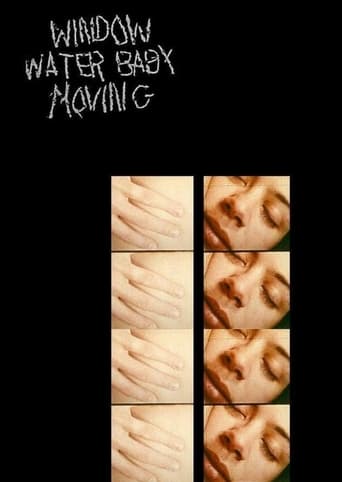

i liked his filmic style at first, his use of jump cuts and sped up footage was effective in portraying the woman's fear and angst although she looked calm on the outside. it also elevated the importance of the action of giving birth. but i don't think the lingering graphic shots of the vagina bleeding did anything for the film and took me out of the rather mysterious tranquil feeling given off by the film previously. he certainly knows how to make a film affecting but i won't want to watch it again and i don't think it conveyed any of the actualities of birth, the beauty and the miracle.
... View MoreYou ever see that cliché happening, if not in TV or movies then in real life, of the husband documenting every single excruciatingly painful but miraculous happening that is birth? Apparently, according to Stan Brakhage on the DVD this film is on, this trend was at least in part inspired by his original efforts. Shot on a minimal budget (save for what it must've cost to have a birth in the Brakhage household as opposed to the hospital), this film IS the difference between a simple 'home movie' and something close to the most personal art possible. Documentary film-making has always been about a subject that compels the filmmaker enough to get hours and hours of footage down. That here Brakhage, who often does montage work of paintings and the like, is focusing his subject matter on his wife, and his child just itching to get out, in all graphic detail, is astounding. For the 60's, when this was first released, it was probably a lot more shocking than now.Not to say that the film isn't shocking, but it is on a different level than what you might see on one of those 'birth' shows on one of the Discovery channels. The way certain things are presented in the film are surprising, and (if you're a guy like me) definitely unnerving. But Brakhage somehow makes his film almost beautiful in a way by cutting the film's subject matter in half, so to speak. The first half is just the mother of his child, in a bathtub, feeling the baby kicking, et all. It's really just a great montage of the woman as a whole, nothing unseen, with the belly getting the most screen-time aside from the mother's face and genitals. Then comes the second part, the birth. Basically, if you still wonder how it works, in near unflinching detail, watch the film. That it is presented in such a grainy 16mm kind of filming, and still using the intense, mad montage of Brakhage's two cameras on her (I think it was two, one more close to the 'action' than the other).And when it ends, it is, like all (practically) successful births, a miracle in and of itself. So much happens within these 13 minutes of film than, in a way, it feels longer. I loved how it dealt with its subject matter, which could be very tricky, and messy (the latter of which is very true), and was still a wonder for the eyes. It lacks music, which is sort of a pro and a con for me- you could do with some music, make it even more home movie-like. As it is, Brakhage has one of his most notorious- and possibly best- works here, and maybe the only film that makes that bridge between a health class and film class in school.
... View MoreOkay, we had to watch this in film school, and I thought it wasn't anywhere nearly as impressive as people say. I was accused of being an idiot, but I'm sorry this film just didn't speak to me the way it did to others. Brakhage is good, I will not say otherwise, but I don't feel that this short is the pinnacle of his career that I was led to believe it is.
... View MoreAn amazing avant-garde short of the birth of Brakhage's first child. This film is both graphic and beautiful while effecting each viewer a little differently. The colors in the film are especially striking. (Warning this film is not for the queazy).
... View More